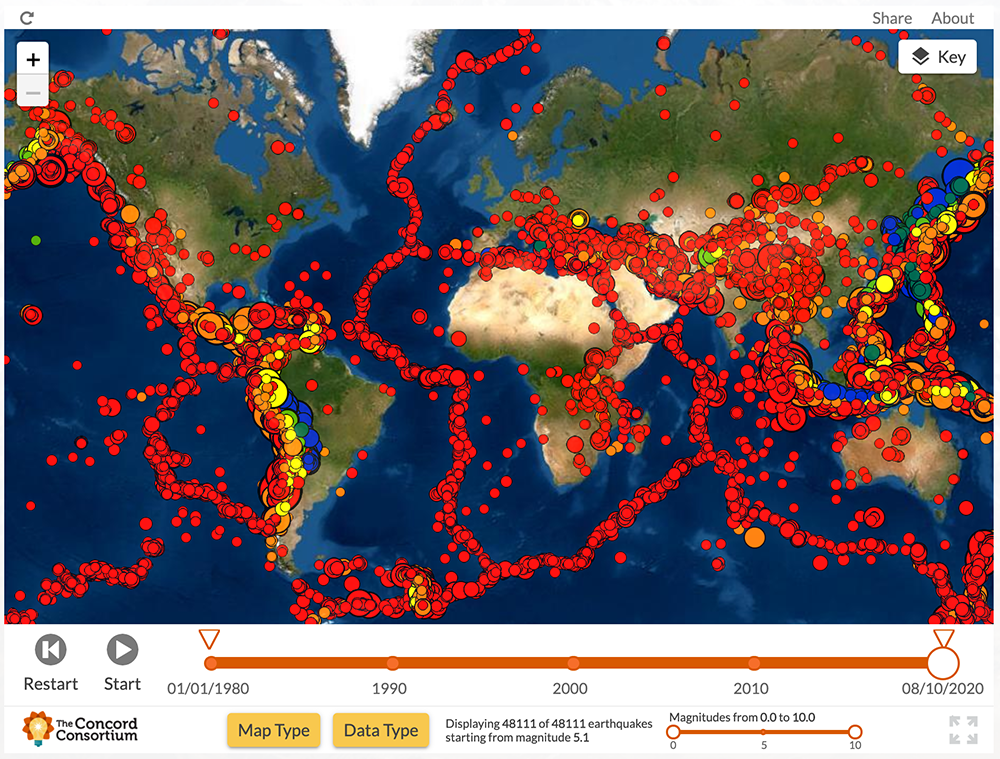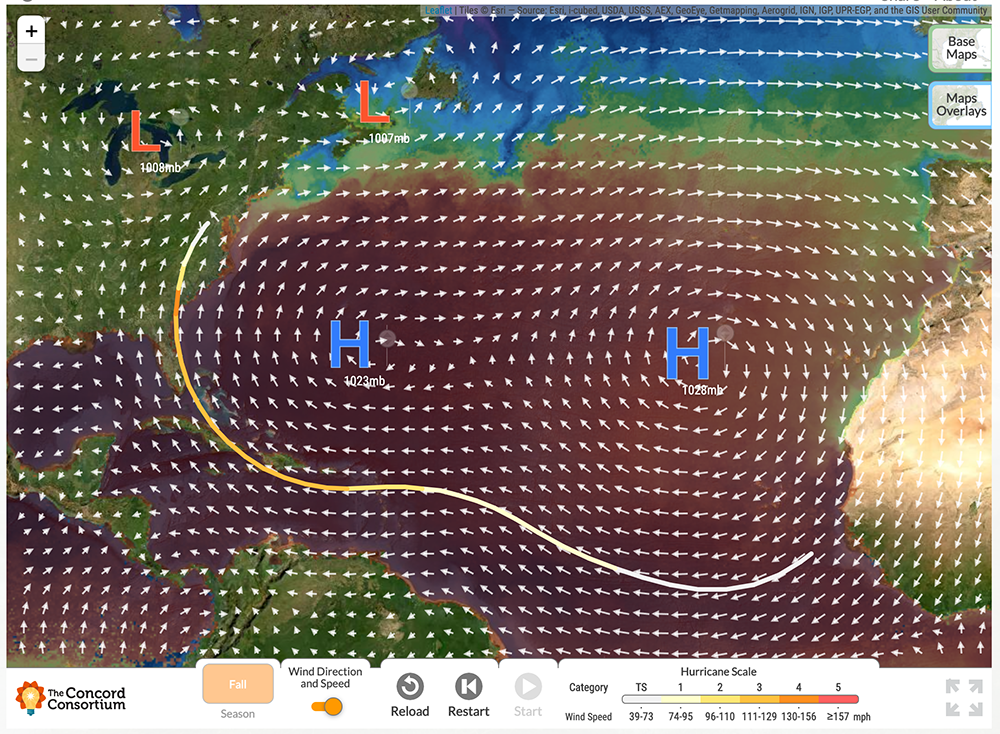Now more than ever, teachers are looking for Earth and environmental science activities they can use in any classroom environment, whether it’s face-to-face or remote. We have developed a collection of innovative curriculum and embedded Earth system models and teacher resources, and want to ensure that these resources can be used by any teacher, anywhere. Although the materials were originally developed to be used in traditional contexts—the way classrooms were before COVID-19—we have found that our teacher support materials have become essential to teachers wherever they teach.
We have integrated educative materials for teachers directly into our student curriculum modules so teachers can quickly get up to speed on best practices for using them in either a remote or traditional classroom context. Each module in our collection includes a Teacher Edition, which gives teachers a view of both what students will use and an interactive layer that includes teacher tips, in-depth theory and background information, student exemplar answers, instructions on using simulations, pedagogical strategies, and links to external resources.
All Earth science and geoscience modules have embedded models and simulations, from our Seismic Explorer to see earthquake and volcanic activity to our Hurricane Explorer, which allows students to simulate hurricane tracks and investigate links between climate change and severe weather. The Teacher Edition explains how to help students make sense of these computational models and how to reason about the science concepts revealed as a result of experimentation with the models. Teachers can also experiment with the models themselves in this context.

Seismic Explorer allows students to see earthquake and volcanic activity.

Hurricane Explorer allows students to simulate hurricane tracks and investigate links between climate change and severe weather.
One teacher reported, “Using the Teacher Edition and experiencing the activities students would be completing works best by having the teacher information at the same time.” Another teacher noted, “It’s important that the Teacher Edition is online and within the work platform. This ensures that teachers are examining the materials in the same way that students will be experiencing the materials. This pushes the teacher’s thinking—seeing what students will experience—and it also moves technology issues more to the forefront.”
Once teachers begin using the module with students, they can take advantage of the real-time Teacher Dashboard, which is also included with each geoscience module. This reporting tool was developed to provide teachers with two levels of information. First, the dashboard gives a quick glance into student progress and an easy way to flag those who are struggling. Second, it provides a way to navigate through student responses both by student and by question, to assess student understanding of concepts and plan for individual, small group, or whole class discussions. Fortuitously, this dashboard works well even when students are working independently at home!
One teacher commented, “It was very useful, especially given this was done virtually.” Other teachers said, “It was a great check-in tool. I conferenced quickly with students about their progress.” And, “I like the ability to pop open the images students are creating and see their screenshots. This helps me get an idea of the level of understanding in a class and check in with individuals and the group.”
We’ve spent the summer analyzing feedback on the Teacher Edition and real-time Teacher Dashboard collected through online surveys and telephone interviews. Based on the suggestions and experiences of almost 100 field test teachers, we are working on adding more features to the Teacher Editions, including ways to share best practices for remote teaching. These teachers shared a number of creative and innovative ideas about how to use our resources remotely:
- Post discussion questions. One teacher used some of the broader questions from the curriculum module that have multiple possible responses as question prompts in Google Classroom and required each student to post their answers and respond to other students’ posts.
- Use Zoom breakout sessions to collaborate. Students work on the same module in small groups in Zoom breakout rooms. In this way, students can discuss the results of their model interactions and share their screen with peers as needed. Another idea is to use the jigsaw method and have small groups focus on specific tasks or model investigations, then come back to the larger group and share with their peers.
- Frame online discussions outlined in the Teacher Edition. During synchronous remote class sessions, use the discussion questions outlined in the Teacher Edition and have students post ideas in the chat. Or divide students into smaller groups with breakout sessions that will report back to the class.
- Gauge understanding on simple concepts. During online meetings, ask students to answer quick questions through polls embedded in the synchronous technology, like Zoom, to gauge understanding of specific concepts and seed discussion.
- Share Google documents. Ask students to collaborate either synchronously or asynchronously on a shared Google Doc to build their Summary Tables or take notes in the same way they might traditionally use a lab book.
- Get organized and communicate. One teacher said, “I think you need to be more organized when you teach an online class. You need to plan with care. I send out weekly email greetings and the students really like that. I do that to remind them of what they are supposed to be doing.” At regular points in the module, take time for reflection on the process of learning online.
We are also improving the Teacher Dashboard user interface and adding new features, like the ability to give students feedback directly through the module. The new dashboard will be released in the early fall.
Try our nine modules today! Each contains interactive Earth systems simulations embedded in a scaffolded student module, a Teacher Edition, pre- and post-assessments, and a real-time Teacher Dashboard.